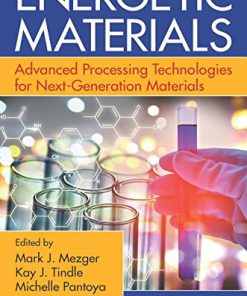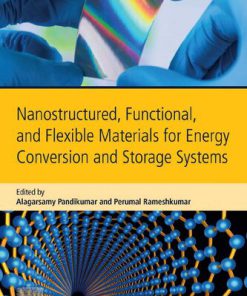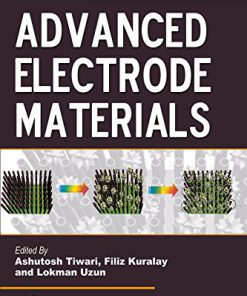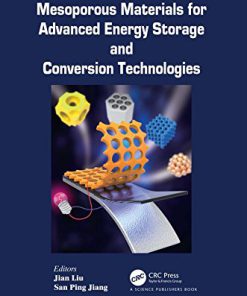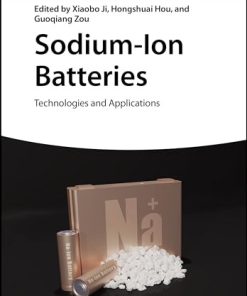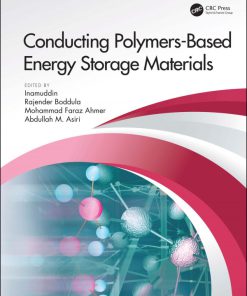Advanced Materials for Sodium Ion Storage 1st Edition by Ranjusha Rajagopalan, Lei Zhang 0429753008 9780429753008
$50.00 Original price was: $50.00.$25.00Current price is: $25.00.
Advanced Materials for Sodium Ion Storage 1st Edition by Ranjusha Rajagopalan, Lei Zhang – Ebook PDF Instant Download/DeliveryISBN: 0429753008, 9780429753008
Full download Advanced Materials for Sodium Ion Storage 1st Edition after payment.
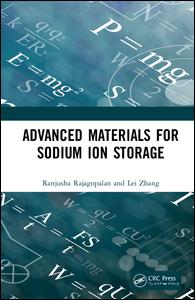
Product details:
ISBN-10 : 0429753008
ISBN-13 : 9780429753008
Author: Ranjusha Rajagopalan, Lei Zhang
Globally, lithium ion batteries (LIBs) are leaders in the energy storage sector but there are concerns regarding load leveling of renewable energy sources as well as smart grids and limited availability of lithium resources resulting in cost increase. Therefore, sodium ion batteries (SIBs) are being researched as next-generation alternatives to LIBs due to their similar sustainability and electrochemistry. This book mainly focuses on the current research on electrode materials and proposes future directions for SIBs to meet the current challenges associated with the full cell aspect. Further, it provide insights into scientific and practical issues in the development of SIBs.
Advanced Materials for Sodium Ion Storage 1st table of contents:
1. Introduction for Sodium Ion Batteries
1.1 The History of the Sodium Ion Battery
1.2 The Main Challenges for the Sodium Ion Batteries
1.2.1 Cathode Materials
1.2.2 Anode Materials
1.2.3 Electrolyte and Additions
Reference
2. Electrochemical Reaction Mechanism in Sodium Ion Batteries
2.1 Introduction
2.2 Key Components and Common Terminologies
2.2.1 Key Components
2.2.2 Key Components Selection Criteria
2.2.3 Common Terminologies
2.2.3.1 Battery Basics
2.2.3.2 Variables to Describe the Battery Condition
2.2.3.3 Battery Technical Specifications
2.3 Electrochemical Reaction Mechanism
References
3. Anode Materials for Sodium Ion Batteries
3.1 Introduction
3.2 Insertion Materials
3.2.1 Carbon-Based Anode Materials
3.2.1.1 Graphite
3.2.1.2 Hard Carbon
3.2.1.3 Graphene
3.2.1.4 Heteroatom Doping
3.2.1.5 Biomass-Derived Carbon
3.2.2 Titanium-Based Materials
3.2.2.1 TiO2
3.2.2.2 Lithium Titanate
3.2.2.3 Na2Ti3O7
3.3 Conversion Electrode Materials
3.3.1 Transition Metal Oxides
3.3.1.1 Iron Oxides
3.3.1.2 Cobalt Oxides
3.3.1.3 Tin Oxides
3.3.1.4 Copper Oxides
3.3.2 Transition Metal Sulfide
3.3.2.1 CoSx (x = 1 and 2)
3.3.2.2 MoS2
3.3.2.3 FeS2
3.3.2.4 SnSx (x = 1 or 2)
3.3.3 Transition Metal Phosphide
3.4 Alloying Reaction Materials
3.4.1 Silicon, Germanium, Tin
3.4.1.1 Si
3.4.1.2 Ge
3.4.1.3 Sn
3.4.2 Antimony, Phosphorus, Bismuth, and Arsenic
3.4.2.1 Sb
3.4.2.2 P
3.4.3 Binary Inter-metallic Compounds
3.5 Organic Compounds
References
4. Cathode Materials for Sodium Ion Batteries
4.1 Introduction
4.2 Transition Metal Oxides
4.2.1 Layered Sodium Metal Oxides
4.2.1.1 Sodium-Based Single Transition-Metal Oxides
4.2.1.2 Sodium-Based Mixed-Cation Oxides
4.2.2 Sodium-Free Metal Oxides
4.2.2.1 Vanadium Oxides
4.2.2.2 Manganese Oxides
4.2.2.3 Tunnel-Type Sodium Transition-Metal Oxides
4.3 Transition-Metal Fluorides
4.3.1 Na-Free Transition-Metal Fluorides
4.3.2 Na-Based Transition-Metal Fluorides
4.4 Polyanion Compounds
4.4.1 Phosphates
4.4.1.1 Olivine
4.4.1.2 Sodium Super Ionic Conductor (NASICON)
4.4.1.3 Vanadyl Phosphate
4.4.1.4 Pyrophosphates
4.4.1.5 Fluorophosphates
4.4.1.6 Mixed Polyanion
4.4.1.7 Alluaudites
4.4.2 Hexacyanoferrates
4.4.3 Sulfates
4.5 Organic Materials
4.5.1 Non-polymeric Materials
4.5.2 Polymeric Materials
4.6 Conclusions and Future Outlook
References
5. Electrolytes, Additives, and Binders for Sodium Ion Batteries
5.1 Introduction
5.2 Electrolytes
5.3 Additives
5.4 Binders
References
6. Current Challenges and Future Perspectives
6.1 Introduction
6.2 Current Challenges
6.2.1 Electrode Selection
6.2.2 Electrolyte, Additives, and Binder Selection
6.2.3 Full-Cell Performance
6.3 Future Perspectives
People also search for Advanced Materials for Sodium Ion Storage 1st:
sodium ion storage battery
advanced materials subnautica
advanced materials of indiana
advantages of sodium batteries
a advance storage solutions
Tags: Advanced Materials, Sodium, Storage, Ranjusha Rajagopalan, Lei Zhang
You may also like…
Chemistry - Technical & Industrial Chemistry
Engineering
Engineering
Mesoporous materials for advanced energy storage and conversion technologies 1st Edition Jiang
Engineering
Engineering




